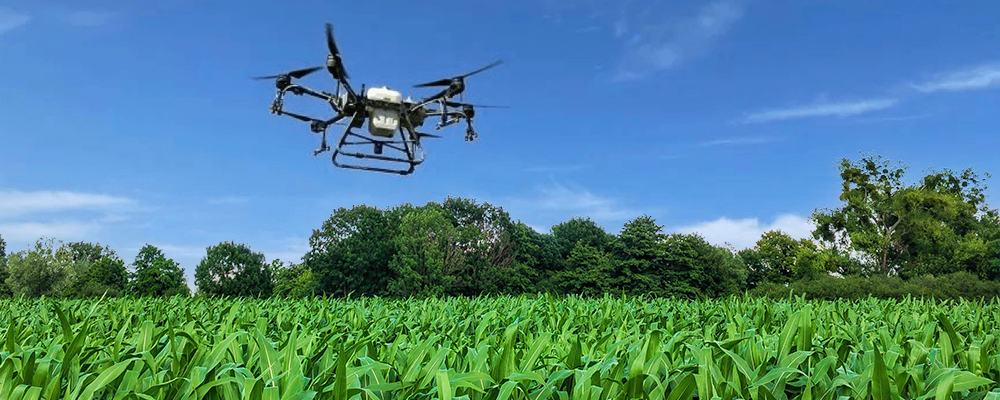The advantages of agricultural drones are difficult to deny. Fortunately, the legal framework for the use of drones is becoming more organized. The most recent European Union proposal suggests further liberalization. The European drone strategy, which is currently being developed, also in line with this.
Years ago, the EU took significant steps to combat excessive chemical treatment of agricultural areas. Simultaneously, it strictly regulated all forms of aerial spraying.
The main issue with spraying by plane or helicopter is that 1) the vehicle travels at high speeds, making it impossible to spray the chemical accurately, 2) the spray is distributed from higher altitude is easily carried away by the wind, poisoning the soil, waters, and the environment, and 3) due to the uncertain target delivery, a large amount of spray is required.
Precision agriculture with drones
The problems raised previously do not apply to drones because:
- drones fly at a low altitude,
- the speed of the drones- compared to airplanes and helicopters - is significantly lower,
- with these devices chemicals are not sprayed evenly everywhere, but the drones are able to precisely determine the area and the type of vegetation,
- with the help of drone technology, it is possible to cover larger croplands, with less required chemical.

New suggestions
Agriculture experts have been putting significant pressure on European decision-makers for some time. With the introduction of advanced agricultural drones, it is clearly evident that a new solution has emerged. While the EU envisions a 50% decrease in agricultural chemical use by 2030, it does not give the resources to accomplish so. It is critical to recognize that precision agriculture and the spraying drones used are best suited for achieving these objectives.
In the European Parliament – European Council proposal of 22nd June, 2022 the previous regulations on plant protection are reviewed and the document also addresses the usage of “unmanned” aircraft (ie, drones).
The proposal states that member countries may deviate from the regulations limiting aerial plant protection under “exceptional conditions.” In this case, the following must be taken into account:
- The technical specifications of the unmanned aircraft, including in relation to Spray drift, number and size of rotors, payload, boom width and overall weight,
- Operating height and speed;
- The weather conditions, including wind speed;
- The area to be sprayed, including its topography; (d) the availability of plant protection products authorized for use as ultra-low volume formulations in the relevant Member State;
- Potential use of unmanned aircraft in conjunction with real time kinematic (RTK) precision farming in certain cases;
- The level of training required for pilots operating an unmanned aircraft;
- Potential concurrent use of multiple unmanned aircraft in the same area.

Previous attempts
The recent report was not the first of its kind. In 2018 a directive of Council of Europe concluded that drones easily adapt to variations in topography and are thus particularly ideal for plant protection in vineyards and orchards located on hills. They also discovered that spraying with drones is substantially faster than spraying with traditional ground tools.
Switzerland also demonstrated that these are not theoretical concerns. The Swiss Agricultural Institute, were examining for three years the practical use of drones in agriculture. The outcomes spoke for themselves.
Final verdict
Technology is rapidly evolving. Drones were previously primarily associated with military technology. Today, specialized agricultural drones assisting farmers in their work. The events of the last several months have been promising, the European Union decision-makers have also realized that drones should not be grouped in with other aircraft, and that agricultural use of drones cannot be put in the same category as traditional aerial spraying. Following recent improvements and model approvals, there is every likelihood that Hungarian farmers will have access to an agricultural drone as easily and quickly as to a tractor.














